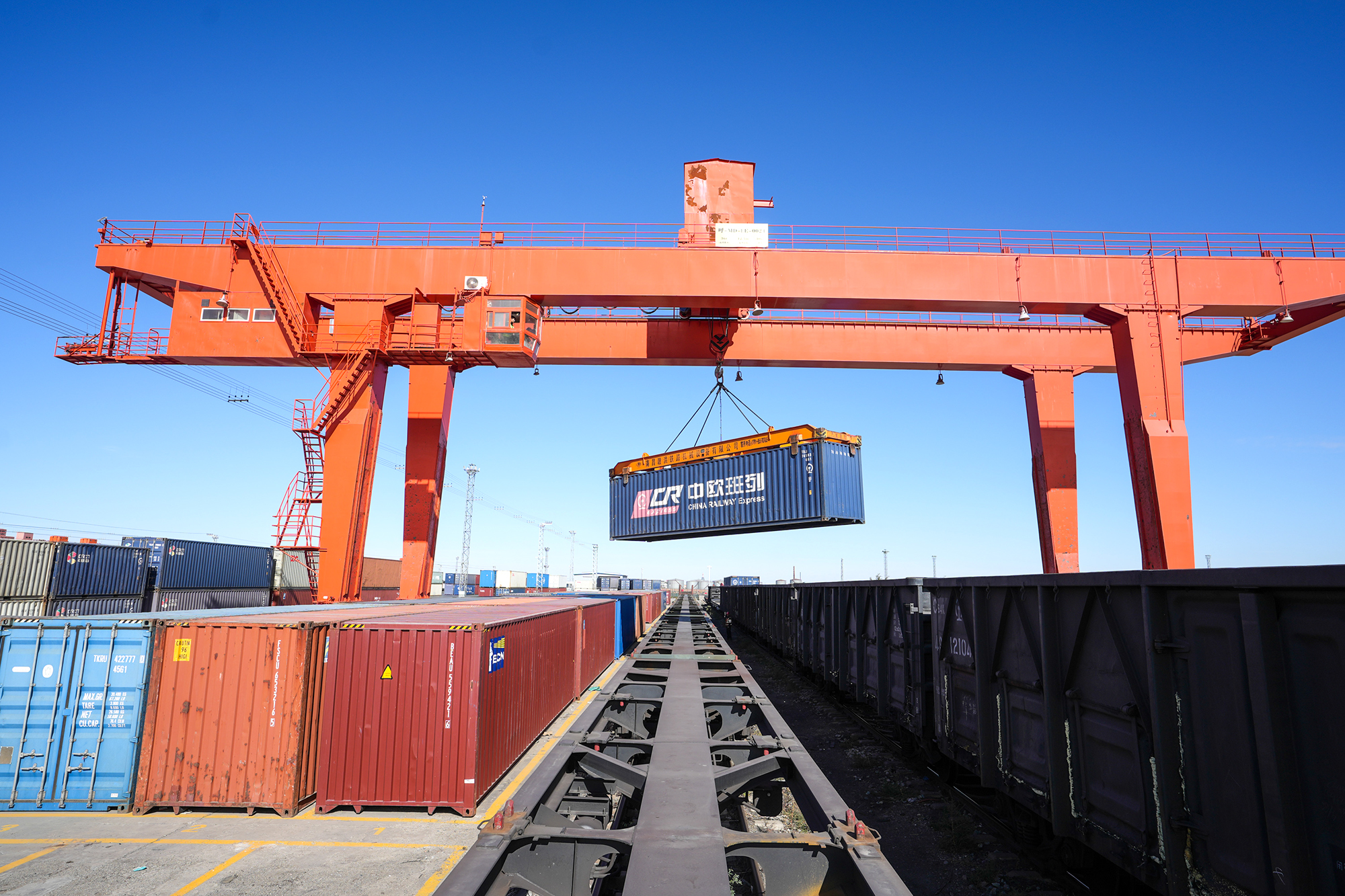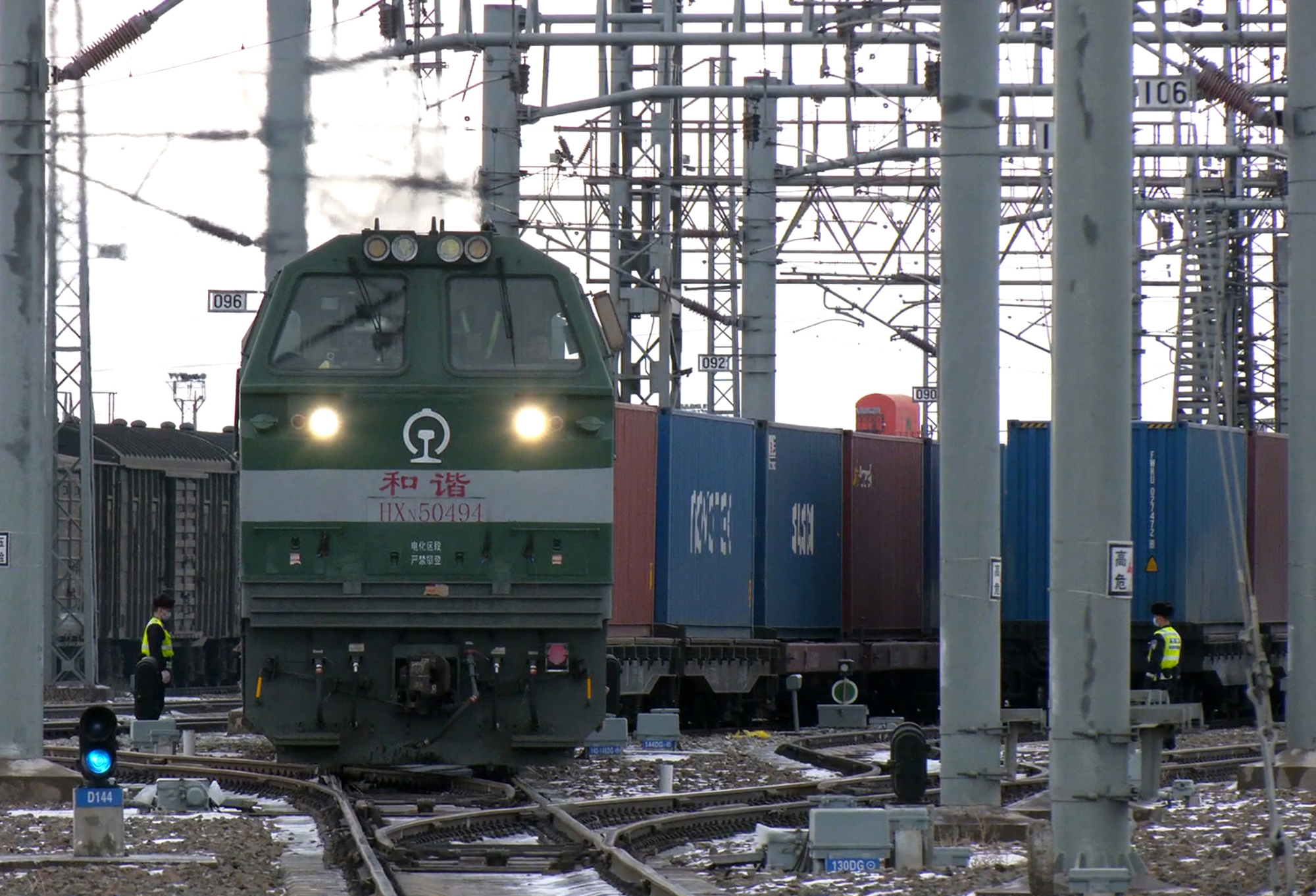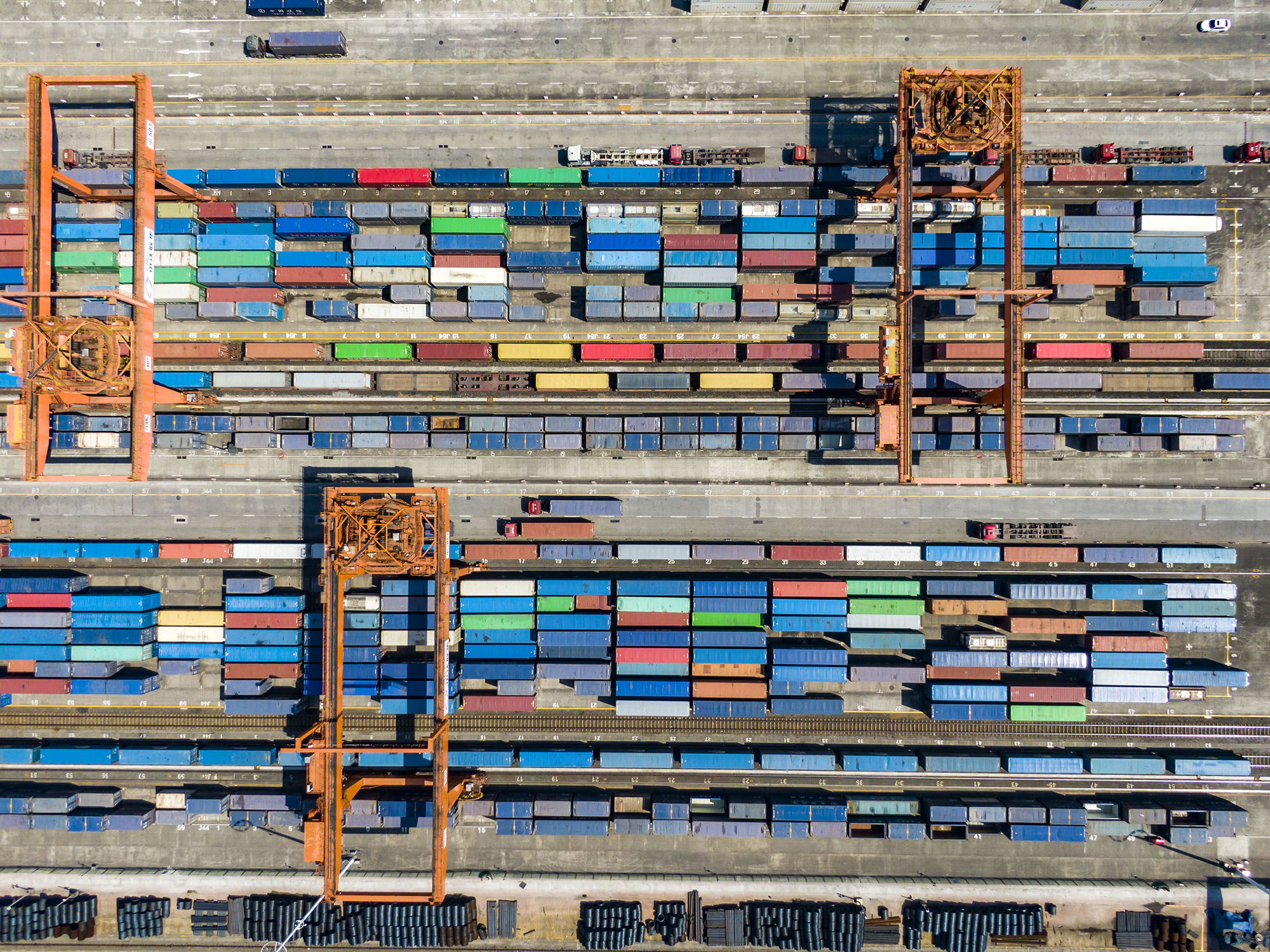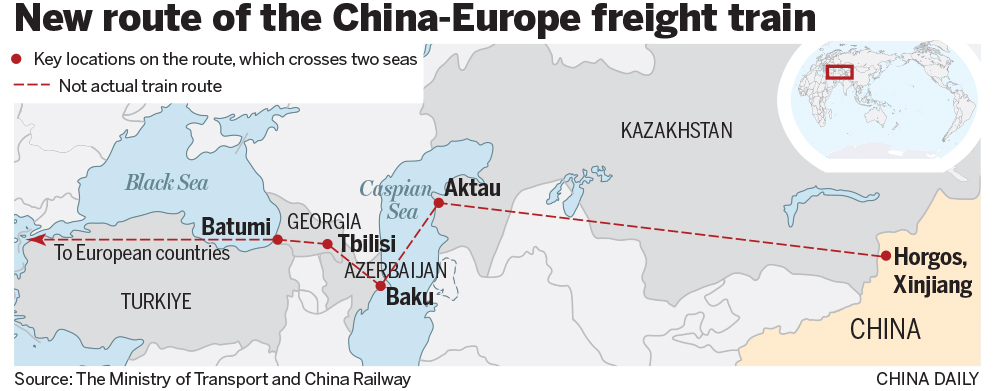Interest in cross-border services increases due to concerns over shipping delays, costs

Freight forwarders have turned to rail services between China and Europe, backed by the Belt and Road Initiative, as a transportation alternative in light of disruption to international shipping caused by the Red Sea attacks, emphasizing the rail route's strategic importance in stabilizing global supply chains.
Houthis in Yemen have been attacking commercial ships "affiliated with and bound for Israel "since November in what they described as an act of solidarity with Palestinians in the Gaza Strip. Their actions have raised the risks for transportation companies moving cargo through one of the world's busiest shipping lanes, resulting in a surge in rates and lengthy delays.
Some smaller-volume goods have shifted to rail transportation, notably on the China-Europe railway line, where the capacity to transport goods from China to the continent has increased significantly from the pre-crisis level, according to a recent report by Fitch Ratings.
"Since January, the number of inquiries (about the China-Europe freight train service) has soared by more than tenfold, and the actual export volume of goods has increased by three to four times," said Kong Weidong, head of the Zhengzhou branch of the T.H.I. Group (Shanghai) Ltd, a freight forwarder.
The cross-border rail freight service takes about 12 to 18 days to reach European destinations from Chinese cities at a cost of about $6,500 per container, Kong said.
Kang Yingfeng, deputy general manager of China Railway International Multimodal Transportation, said there had been a significant increase in inquiries about the China-Europe freight train service since the beginning of this year. CRIMT is the national operator of the China-Europe freight train service and a subsidiary of China Railway Container Transport.
A new China-Europe freight route combining rail and ocean transportation that crosses the Caspian and Black seas has attracted strong interest, he said. The service also passes through countries such as Kazakhstan and Georgia before reaching European countries.
"Chinese, European, and American customers, as well as large international logistics companies such as DHL and Kuehne+Nagel, have shown strong interest in the new route passing the transcontinental maritime routes, attracting freight from China to Georgia, Turkiye, and Central and Eastern Europe, as well as Southern Europe," he said.
DHL said requests to move goods on the rail service to Russia had increased by about 40 percent since container ships began diverting via a longer route in December, The Financial Times reported last month.

Troubled waters
The Red Sea is an essential part of the ocean freight passage linking Europe and Asia. About 60 percent of Chinese trade with Europe transits through the Suez Canal, which involves passing through the Red Sea, according to the Fitch Ratings report. Shipping costs have increased by more than 150 percent since December, the global credit ratings firm reported in late February.
Freight forwarders have opted to detour around the Cape of Good Hope in South Africa, which adds 10 to 14 days to transportation times compared with the direct route through the Red Sea and Suez Canal. The detour takes the total shipping time from the Far East to Europe to about 50 days.
The crisis has also raised uncertainty about the length of shipping times.
Major ocean freight carriers have paused some or all transits through the Suez Canal and begun diverting ships away from the Red Sea, according to a recent report from Xeneta, a freight rate data platform. This has triggered nearly a month of shipping uncertainty and raised ocean freight shipping rates. With logistics company A.P.Moller Maersk recently announcing the extension of its pause on transits "for the foreseeable future", this uncertainty shows no sign of slowing down, the report said.
The overall cost to the international supply chain has also been driven up by the Red Sea crisis, said Wang Yangkun, head of the Transport Technology Development Research Center at the National Development and Reform Commission's Institute of Comprehensive Transportation.
While the costs of international transportation, overseas warehousing, and supply chain management have all risen, other risks have been exacerbated by spillover effects, Wang said. "Inflation, exchange rates, insurance, settlements, and financing will also elevate the overall cost of the international supply chain," he said.
He Yun, an associate professor at Hunan University's School of Public Administration said the Red Sea crisis had led to significant disruptions in global supply chains.
"As much as 30 percent of global container trade transits through the Suez Canal, meaning the crisis is disrupting a significant portion of international commerce," she said.
"These shifts underscore the fragile nature of global supply chains and the importance of alternative routes and modes of transportation, such as the China-Europe Railway Express."

Reliable route
The importance of the China-Europe freight train service is gaining credence as a strategic alternative to facilitate the flow of goods between China and the continent.
Fu Cong, China's former ambassador to the European Union, called the freight service "a flagship project of China-EU Belt and Road cooperation that has stood out as a land-based alternative that provides rapid, stable, and reliable solutions to the massive flow of goods between both sides "amid "the complex and turbulent geopolitical situation, especially since the outbreak of the Red Sea crisis".
He made the remarks in March in a signed article published on Euractiv, a European news website focused on EU policy issues. "It is fair to say that the China-Europe Railway Express has become a lifeline for China-EU trade at this critical moment," he said.
The China-Europe freight train service began in 2011. As of February, it had operated more than 85,000 trips connecting 120 Chinese cities with 219 destinations in 25 European countries, according to China State Railway Group, the company that oversees the China-Europe freight train service.
Last year, about 17,000 China-Europe freight train services were operated, carrying 1.9 million containers.
In January and February, 2,928 freight trains operated between China and Europe, carrying 317,000 containers, a year-on-year increase of 9 and 10 percent, respectively, the latest data showed.
In addition to increased capacity, the quality of the service has been improved.
Kang, from China Railway International Multimodal Transportation, said the types of goods carried by the China-Europe freight train have expanded from 53 items when the service started to over 50,000 products today. "Many cities have launched tailored services, such as an entire train carrying ketchup, timber, tea, edible oil and new energy vehicles," he said.
To improve service quality, trains have been running to set schedules since October 2022, Kang said. Unlike regular cargo carriers, the trains adhere to a set schedule along the entire route, further reducing transport time and also allowing customers to calculate journey times between cities, thus improving service quality.
So far, five scheduled services have been operated, which have reduced 30 percent of travel time compared with regular China-Europe freight train services.
The scheduled services arrive at destinations on time. For example, the service from Xi'an, Shaanxi province, to Duisburg in Germany takes 300 hours and seven minutes.

Resilient service
Wang, from the NDRC, said the freight service emerged in response to the steady growth in trade between China and Europe, and it has shown its resilience amid the impact of the COVID-19 pandemic, the Ukraine crisis and other factors.
"It has grown into a vital component of the transcontinental transportation logistics corridor across Asia and Europe, and is also an indispensable part of the international transportation and logistics system," he said.
The China-Europe freight train service is economically advantageous to products with more added value, Wang said, adding that the service network covers vast areas and is continuing to grow.
With monthly volume of about 150,000 containers, the service has a large transport and supplementary emergency capability, Wang said. "The geopolitical environment along the main route is generally safe and stable, and the diversification of routes is deepening, which can effectively meet certain emergency logistics needs," he said.
He, from Hunan University, said that in times of maritime disruptions like the one in the Red Sea, the China-Europe Railway Express is crucial in maintaining the flow of goods amid geopolitical tension and natural challenges.
"By providing a stable and reliable alternative, the rail service can help mitigate some of the supply chain instabilities caused by such maritime disruptions," she said.
Despite the growing recognition of the rail corridor's role, Wang said the transportation capacity of freight trains accounted for only a small portion of the entire international trade transportation market. Maritime shipping remains the dominant mode of such transportation, he said.
"In the short term, it (the railway service) can play a limited role in emergency supplementary support for maritime shipping, enhancing the resilience and security level of related industrial and supply chains," he said.


